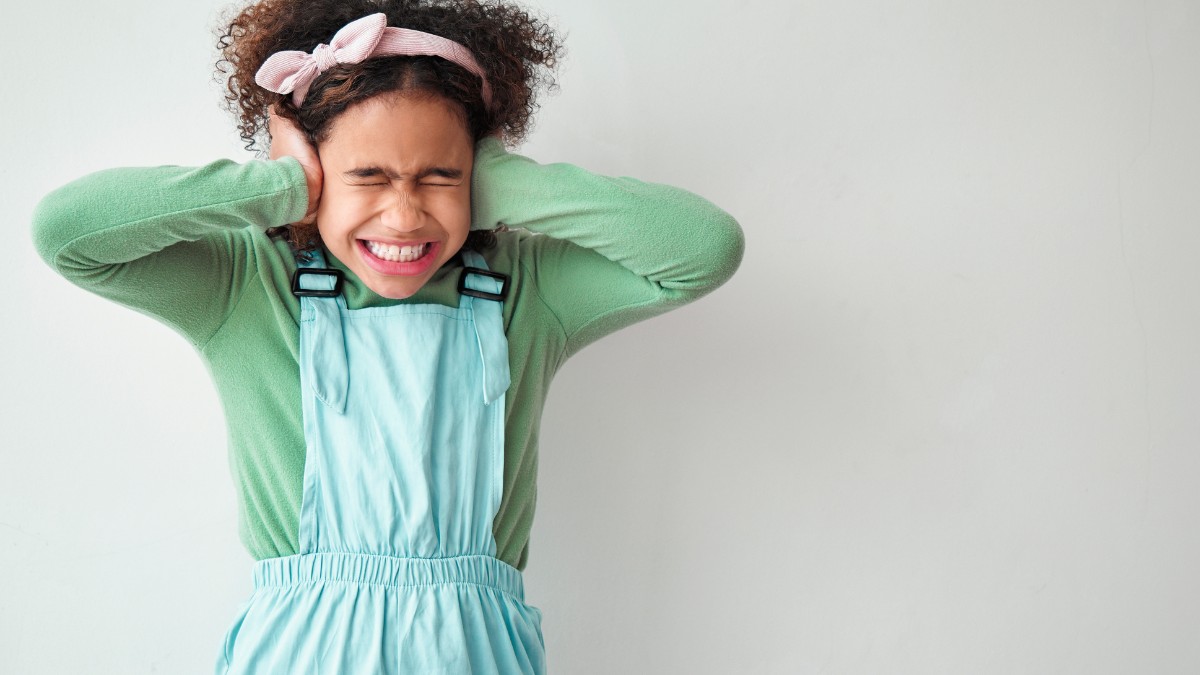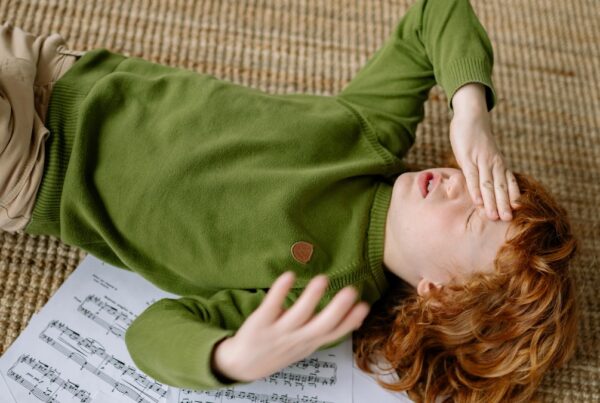Key Points:
- Sensory hypersensitivity in autism is rooted in how the brain processes sensory input, often causing overwhelming reactions to everyday stimuli.
- Managing hypersensitivity requires practical strategies tailored to each child’s unique sensory profile.
- Applied Behavior Analysis (ABA) therapy can help children build coping skills and reduce sensory-related distress over time.
Some kids cover their ears at the park. Others melt down over scratchy tags or buzzing lights. For children with autism, these aren’t overreactions—they’re real struggles. Sensory hypersensitivity can affect everything from routines to relationships. Let’s break down why it happens and how you can help your child cope.
What is Sensory Hypersensitivity in Autism?
Sensory hypersensitivity in autism is a common condition where individuals experience heightened or overwhelming reactions to sensory stimuli like lights, sounds, textures, or smells. It’s often due to differences in how the brain interprets sensory input, and it plays a significant role in daily challenges for many autistic children.
This sensitivity can cause intense discomfort or emotional reactions, especially in environments that seem normal to others. Recognizing and understanding this trait is key to offering effective support and care.
Why Do Children With Autism Experience Sensory Hypersensitivity?
Many parents wonder why their autistic child covers their ears at a birthday party or refuses to wear certain clothes. It’s not just about being picky or dramatic—there’s a neurological reason behind these behaviors.
In children with autism, the brain often processes sensory information differently. Instead of filtering out non-essential input, the brain may treat all stimuli with equal intensity. This means something as simple as a fluorescent light or the scratchiness of a tag in a shirt can feel unbearable. Research suggests this may be due to differences in brain connectivity, particularly in the areas related to sensory integration and regulation.
These neurological differences aren’t defects—they’re variations in processing that require accommodation and understanding. Sensory hypersensitivity autism cases vary widely; some kids are oversensitive to sound, others to touch, or even to smells. The key is learning your child’s unique sensory profile.
6 Common Signs of Sensory Hypersensitivity in Individuals with Autism
Sensory issues are one of the core diagnostic features of autism spectrum disorder (ASD), but they can manifest differently from child to child. Recognizing the signs is crucial for early intervention and support.
Children with sensory hypersensitivity may:
- Cry or scream in response to everyday noises (like vacuum cleaners or hand dryers)
- Refuse to wear certain fabrics or clothing items
- Avoid bright lights or become distressed in noisy environments
- Show extreme reactions to being touched, even gently
- React strongly to smells or tastes that others find neutral
- Engage in self-soothing behaviors like rocking, humming, or covering ears
The behavioral responses are often attempts to manage discomfort or sensory overload. Left unaddressed, these responses can affect learning, social interaction, and quality of life.
If you’re curious about sensory hypersensitivity in children with autism, you might also want to check out our article, “Is Hypotonia Common in Adults with Autism? Find Out Here.” It dives into the connection between hypotonia and autism in adults, providing valuable insights that complement the information on sensory sensitivities in kids.
How Sensory Overload Affect Daily Life
Daily routines can become major stressors when a child experiences sensory hypersensitivity. Something as ordinary as brushing teeth, walking into a grocery store, or attending a family gathering can turn into a battleground of discomfort and emotional escalation.
Sensory overload occurs when multiple stimuli pile up faster than a child’s brain can process them. This leads to distress, meltdowns, or shutdowns. Unlike tantrums, sensory meltdowns aren’t driven by willfulness—they’re involuntary responses to overwhelming input.
Common real-life challenges include:
- Difficulty in school settings – Noise, lights, or crowded hallways can be overwhelming.
- Disrupted sleep – Sensory sensitivity can make falling or staying asleep a struggle.
- Feeding issues – Textures or smells of food may cause food refusal or extreme pickiness.
- Social isolation – Avoidance of certain environments can reduce social opportunities.
Helping your child cope involves identifying triggers, adjusting the environment, and building tolerance gradually over time.
How Can Parents Help a Child Cope With Sensory Hypersensitivity?
Managing sensory hypersensitivity autism challenges isn’t about “fixing” your child—it’s about helping them feel safe and empowered. Creating a predictable, supportive environment can dramatically reduce stress for both the child and the family.
Here are some practical steps you can take:

Every child is different—what calms one child may agitate another. Trial and error, combined with expert guidance, go a long way.
Can ABA Therapy Help With Sensory Hypersensitivity?
While ABA therapy is often associated with teaching skills and managing behaviors, it can also play a major role in helping children cope with sensory hypersensitivity. ABA doesn’t “desensitize” in a harsh way—it uses gradual exposure and reinforcement to build tolerance and reduce anxiety.
Here’s how ABA therapy supports children with sensory hypersensitivity:
- Individualized intervention – Each child’s sensory profile is taken into account when developing treatment plans.
- Positive reinforcement – Children are rewarded for using coping skills or tolerating sensory input in manageable steps.
- Functional communication training – Helps children express their sensory needs instead of acting out.
- Generalization strategies – Teaches children to use skills across different environments, from home to school to the community.
Working alongside occupational therapists, ABA therapists can coordinate care to ensure that sensory needs are understood and supported consistently.
When Should Parents Seek Professional Help?
If sensory issues are interfering with your child’s daily life—whether that’s at school, at home, or in social settings—it’s time to reach out for support. While every child has preferences, extreme sensitivity that causes distress or limits participation needs more structured intervention.
Here are some red flags that may indicate the need for professional support:
- Frequent meltdowns related to sensory input
- Extreme avoidance of grooming tasks like haircuts or tooth brushing
- Self-injurious behaviors linked to sensory overload
- Difficulty functioning in typical environments (e.g., daycare, playground, classrooms)
Early intervention makes a difference. Don’t wait for things to “get better with age.” The earlier you start, the more strategies your child can build.
Ready to Support Your Child? Get ABA Therapy With Crown ABA
Navigating sensory hypersensitivity autism challenges can feel overwhelming, but you don’t have to do it alone. Crown ABA offers compassionate, research-driven ABA therapy designed to meet your child’s individual needs—especially when sensory sensitivities are involved.
Crown ABA provides in-home and center-based ABA therapy in Maryland. Let’s build a plan that helps your child face the world with confidence—one small, supported step at a time.
If you’re ready to take the next step toward helping your child better navigate the sensory world, reach out to us today!





